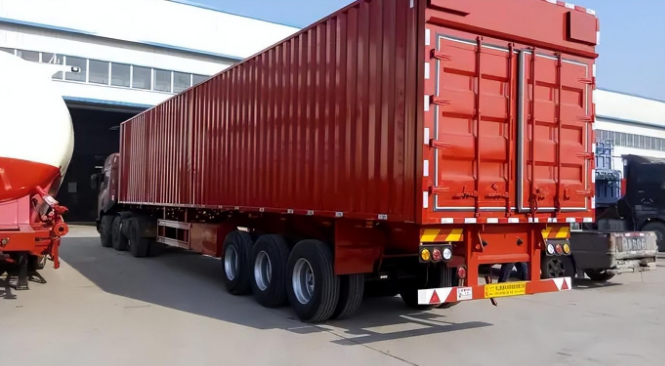Zero-load transportation refers to the transportation mode of sharing a truck with several or even hundreds of different batches of goods when the weight or volume of a batch of goods is less than one car and cannot meet the conditions of full vehicle transportation.
As far as the mode of transportation is concerned, zero-load cargo transportation is divided into highway transportation, railway transportation and air transportation. Among them, highway transportation has become the main mode of transportation of zero-load cargo by virtue of its flexible and convenient characteristics.
Common types of LCL cargo:
By definition, the type of zero-load cargo is relatively wide, such as construction machinery, electronic appliances, biological medicine, fresh products, tobacco diet, textiles, and thus on, nearly the basic goods are within the scope of zero-load consignment. According to Semi Trailer Manufacturers, the following exceptions are excluded:
1. Goods that need to be refrigerated, kept warm or heated for transport
2. Dangerous goods that are limited to complete vehicles
3. Foul products that are prone to contaminate other goods (e.g. animal bones, wet fur, feces, carbon black, etc., that have not been sterilized or have not been packed in a sealed package)
4. The bees
5. Goods whose number is not easy to calculate
6. Live animals without containers (except those that can be transported in the pipe according to the provisions of the Railway Bureau)
7. Goods whose weight is over 2t, volume is over 3m³ or length is over 9m (except those confirmed by the originating station that will not affect the operation of loading and unloading at the transfer station and arrival station)
 In terms of categories, the cargoes can be divided into the following categories:
In terms of categories, the cargoes can be divided into the following categories:
1. Ordinary LCL goods: refers to the goods that are packed in ordinary parts, have no risk or minimal risk, are easy to assemble with other goods, and the weight, volume and length of the parts are all less than the whole vehicle transportation.
2. Heavy and light cargoes: refers to the cargoes with a weight of more than 1t, a volume of more than 2m³ or a length of more than 5m, which are suitable for loading, hoisting and unloading by convertible cars.
3. Hazardous zero-load goods: refers to the dangerous goods that have the characteristics of inflammable explosion, corrosion, toxicity and radioactivity in the process of transportation and can be handled as zero-load goods.
The main characteristics of zero-load transportation:
1. In terms of quantity and batches, the quantity of zero-load goods is tiny but the batches are large. The same batch of goods cannot be filled with one car, and a zero-load transport truck is loaded with several batches of goods.
2. The cargo owner of a transport vehicle is different, and the address of the goods consigned by different owners is not the same. There are different stations, but the transfer station is the same;
3. there are a large number of varieties of LCL goods, the size, shape, weight and quality of the goods are different, and different types of goods have different requirements for packaging.
The advantages of light load transportation:
1. With the characteristics of large variety, tiny batch and multiple batches, zero-load transportation can meet the freight transportation needs of people at different levels and facilitate the actual needs of mass material production and flow.
2. The zero-load transportation is flexible, with fixed line, regular and fixed operation. The business personnel and the shipping unit have a clear understanding of the transportation situation, which is convenient for the stations along the way to organize the supply of goods, and the round-trip load rate is elevated.
3. Can do door-to-door pickup, delivery to home, can effectively shorten the delivery time of goods, accelerate capital turnover, etc.
Disadvantages of light load transportation:
1. The unit transportation cost of zero-load goods is higher, and due to its multiple turnover links, it is more likely to cause damage and poor goods.
2. Compared with vehicle transportation, zero-load transportation needs to be equipped with a certain warehouse, cargo shed, platform, and the corresponding loading and unloading, handling, stacking of machinery and tools, because of its turnover links, more likely to appear goods damage, goods poor, thus the cost of zero-load cargo transportation is higher.
3. Because the goods sent by the shipper are not sufficient for one car, the goods are scattered, so the goods need to be rounded up and sent out, and the speed of departure is relatively easy.
Suitable models for zero-load transportation:
Vans or grid cars are typically selected for running light loads. The main trucks in provincial special lines are 9.6m trucks, and semi-trailers are mainly used for those beyond this range and with large cargo volume.
need to pay special attention to is, due to the introduction of the implementation of the blue brand current regulations, September 1, the traditional tall bar on the market will gradually be replaced by the layered tall bar or 1.5m half tall bar, owners in the choice of car also do a good job of consultation, so as not to appear on the card.